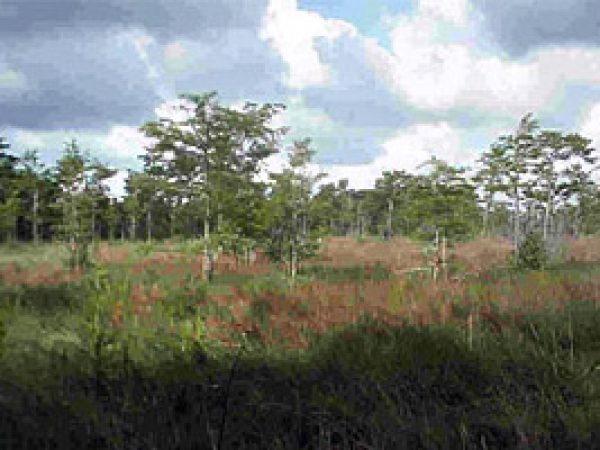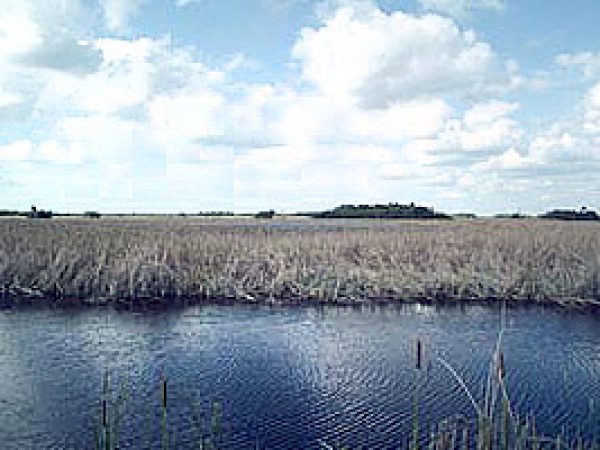Cypress trees are well-adapted to water-logged soils in the Everglades.
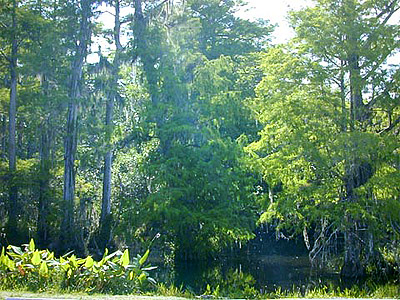
Cypress trees, the most flood-tolerant of all Florida tree species, grow in areas that are covered in water for longer periods than the surrounding marshlands. Two species of cypress occur in the Everglades, the bald cypress (Taxodium distichum) and the pond cypress (Taxodium ascendens). Within the Everglades, cypress swamps are restricted to Loxahatchee National Wildlife Refuge and east of Shark River Slough and into Taylor Slough in the southern Everglades.
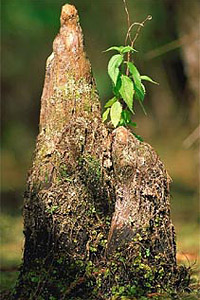
Cypress trees sometimes form large circular-shaped patches of cypress, also known as cypress domes, with larger trees toward the center pond area. Out of the extensive regions of sawgrass marsh, arise occasional tree islands, known as cypress savannas. These are open habitats primarily composed of pond cypress trees living on poor soils.
 Cypress trees lose their leaves in the autumn and regrow new leaves in the spring. Photo courtesy National Park Service
Cypress trees lose their leaves in the autumn and regrow new leaves in the spring. Photo courtesy National Park Service Tree islands. Photo courtesy U.S. Geological Survey
Tree islands. Photo courtesy U.S. Geological Survey
Cypress trees are well adapted to the water-logged soils of the Everglades. The roots produce “knees” that protrude above the soil, ranging from a few inches to 6 feet (several centimeters to 1.8 meters) tall. It is thought that these knees aid in respiration, providing required oxygen to the root tissues, as well as aiding in structural support in water-logged soils.
Fire Impact
Fires are a minor threat to cypress swamps due to saturated soils.
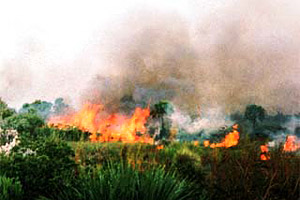
Cypress tress are able to survive fires with little damage due to the amount of water in the soil. However, during the dry season or times of drought, fire can burn the soil, damaging the roots and killing trees. Fire actually restricts cypress trees from thriving in dry upland areas, limiting them to moist marsh areas.
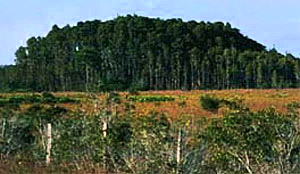
Fires occasionally burn the edges of cypress swamps, preventing the invasion of other plants into unique habitat. Without occasional fires, the cypress swamp would eventually become a wet forest or bog habitat. During times of drought, fires may burn the rich organic soils found in the interior of cypress swamps. This may result in damage to the cypress roots and deaths of some trees.
Cypress savannahs are more susceptible to fire damage, however fires rarely kill trees in these habitats due to the small amount of organic matter in the soils.
